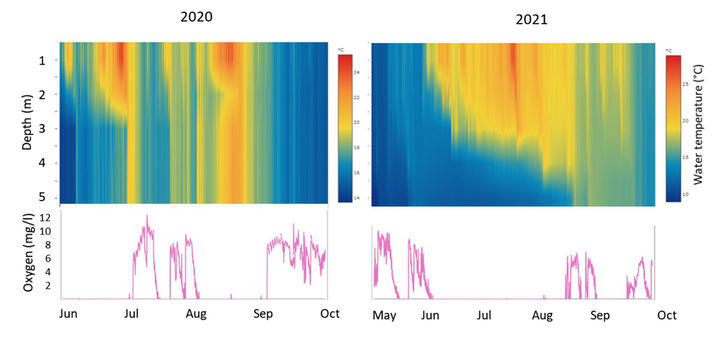Temporarily and frequently occurring summer stratification and its effects on nutrient dynamics, greenhouse gas emission and fish habitat use: case study from Lake Ormstrup (Denmark)

Abstract
Temporary summer stratification is probably a common, but easily overlooked phenomenon in many shallow lakes, because short-term temperature stratification and mixing events are not easily discovered by routine samplings. We used two years of high frequency measurements and monitoring of 5-m deep and hypereutrophic Lake Ormstrup, Denmark to study the dynamics of temporary stratification and its effects on oxygen concentrations, nutrient cycling, greenhouse gas emissions and fish habitat use. Temporary stratification followed by complete mixing of the water column occurred several times each summer, but its duration was highly variable between years despite only small climatic variations. Anoxia at depths greater than 2–3 m developed within a few days after stratification. During anoxia fish accumulated in the upper 2 m and high accumulation of phosphate (up to 1.34 mg/l), ammonia (up to 2.32 mg/l) and greenhouse gases (methane up to 5 mg/l) occurred at depths greater than 2–3 m that were released at mixing. Lake Ormstrup is an example of how very dynamic, unpredictable, and variable mixing conditions develop each summer with significant implications for fish habitat use, nutrient dynamics and greenhouse gas emissions. This might adjust our view of these lakes in a management and climate change perspective.